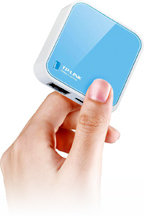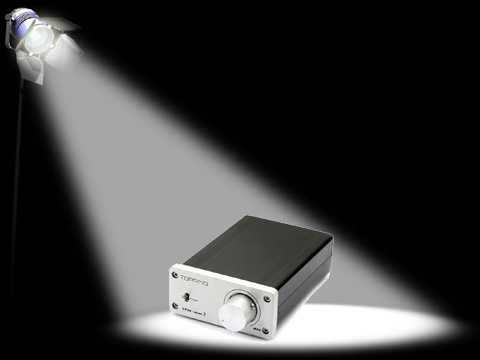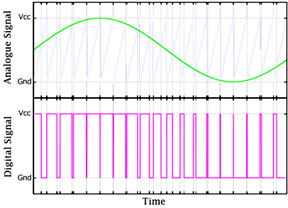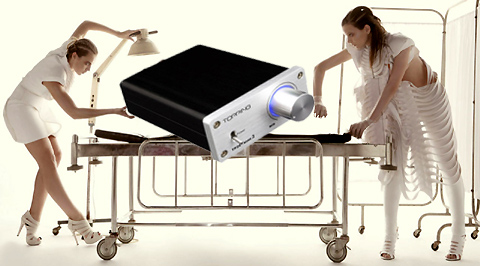Friday 1 November, 2013, 13:00 - Satellites
Posted by Administrator
Posted by Administrator
 Recently Wireless Waffle reported on the launch of the first four satellites in the O3b fleet which were intended to launch a service to provide high speed wholesale broadband services in remote areas. We suggested that there were many business and technical challenges that O3b might face in commercialising their service. It seems we may have tempted fate a little - oops!
Recently Wireless Waffle reported on the launch of the first four satellites in the O3b fleet which were intended to launch a service to provide high speed wholesale broadband services in remote areas. We suggested that there were many business and technical challenges that O3b might face in commercialising their service. It seems we may have tempted fate a little - oops! Rumour has it that a power component in all of the satellites currently in orbit has failed meaning that they will have to be scrapped. In addition, the launch of the next set of satellites will be delayed by up to a year whilst they are re-fitted. The reason for this is not certain, but might be related to the orbit of the O3b satellites being in the Van Allen belt.
Rumour has it that a power component in all of the satellites currently in orbit has failed meaning that they will have to be scrapped. In addition, the launch of the next set of satellites will be delayed by up to a year whilst they are re-fitted. The reason for this is not certain, but might be related to the orbit of the O3b satellites being in the Van Allen belt.Whilst the technical failure can be recovered from, there are, of course, commercial implications of these problems. Firstly there is the cost of replacing the first 4 satellites - although this should be able to be claimed from insurance (which all satellite launches have). Like any insurance policy though, the broker will want to investigate the fault in detail, identify who is culpable, and assess what payments are due and this will certainly add delays to any re-payments and may not necessarily result in the recovery of all the losses.
Then there is the also cost associated with the need to re-fit the yet-to-be-launched satellites. But perhaps the biggest loss may arise from the delay associated with the launch of the service. Like any project requiring infrastructure, O3b will be relying on funding from banks and other organisations to finance the launch of the service. And like any loan, there will be expectations on repayments. Delaying the launch will delay any revenues and thus the abililty to service debts. This might even result in O3b breaching its banking covenants.
Technical failures of satellites are not uncommon but such a major fault on multiple satellites leading to delays in the launch of a service that will, in the long term, be replaced by fibre connectivity, will make the business model look less attractive to investors. The question now is whether the service will become O3bsolete before it gets off the ground!

add comment
( 6040 views )
| permalink
| 



 ( 2.8 / 1796 )
( 2.8 / 1796 )




 ( 2.8 / 1796 )
( 2.8 / 1796 )
Sunday 20 October, 2013, 13:49 - Radio Randomness
Posted by Administrator
In major cities around the World it is now unusual to find yourself in a place without a WiFi connection or two going for free. Coffee shops, bars, department stores and many other places now offer free WiFi to their customers. Normally all that is required is to enter an e-mail address and accept a set of terms and conditions and you are surfing gratis. For anyone roaming and facing extortionate fees for their data connection, these WiFi connections can be a godsend.Posted by Administrator
But there are still some places around the world, even in major cities, where WiFi connections are few and far between and top of the list are the various underground metro systems. To make matters worse, many metros are not only WiFi free zones but are lacking mobile phone coverage too. Thankfully this situation is becoming less frequent as operators (whether transport or mobile) decide to provide the infrastructure necessary to enable mobile coverage underground. Covering underground tunnels and stations is not difficult, but it can be expensive. It requires the use of special antennas and in many cases the laying of leaky feeder - a coax cable specially designed to 'leak' signals along its length thereby acting as a long antenna.
The London underground has long been an area devoid of any kind of broadband internet connectivity, but for the 2012 Olympic Games many stations (not the tunnels connecting them) were fitted with free WiFi by internet service provider Virgin Media. Since the games, the WiFi has no longer been free (except for existing Virgin Media customers) but coverage is slowly being extended.
If you want to know which stations have coverage, you could visit Virgin Media's station guide, or alternatively 'there's an app for that'... The Station Master
 app (unfortunately only for the iPhone at the moment) will let you know exactly which stations have WiFi connectivity and is updated regularly with information from people using the underground network and so often it shows stations that have got WiFi but which have not made it to the official station guide yet. As if to prove a point, at the moment Station Master is showing 123 stations with a WiFi service whereas the Virgin Media web-page only shows 120!
app (unfortunately only for the iPhone at the moment) will let you know exactly which stations have WiFi connectivity and is updated regularly with information from people using the underground network and so often it shows stations that have got WiFi but which have not made it to the official station guide yet. As if to prove a point, at the moment Station Master is showing 123 stations with a WiFi service whereas the Virgin Media web-page only shows 120!
Not only does it show you where there's WiFi on the London underground but it also has 3D plans of nearly all of the central London stations (so you know which stairwell is quickest and easiest for getting from one line to another) and also will tell you exactly which door to stand at to get on the train so that you are in the right place to get to that stairwell or walkway when you get off the other end. For anyone who uses the London tube to get around, the app is a must have (even at GBP1.99). Of course you'll have to have a WiFi or mobile connection first to be able to download it in the first place!
Whilst Wireless Waffle is branching out into equipment reviews the time seems right to give a plug to the snappily titled TP-Link WR702N wireless N nano router.
What is it? It's a small (hand-sized) wireless router that can be configured to do a number of jobs. In essence it's a wired network connection and a wireless network connection in a single box that can be configured in a number of ways. For example:
The device deserves a special mention because of both its flexibility in being able to do a number of different tasks, but most importantly because of its usefulness. The only downside is that it can be fiddly to set-up (see the CNET review of the device for more info on this).
 Imagine, if you can, being in an overseas hotel where there is a free wired internet connection but no WiFi and all you have to connect to the internet are your phone, a tablet and a laptop that's so slim and sexy that it doesn't have a wired network socket. You could turn on data roaming, but we all know how extortionate that is. You could get high, get moving, get naked and get clear to see if you can snag a signal from a rogue, unencrypted WiFi connection. You could wander down the street to the nearest coffee shop and hope they have WiFi. Or... you could have brought your TP-Link WR702N with you and plug it into the wired connection. Before you can say 'hey espresso', you have a ready made WiFi connection and both your phone and tablet are ready to update your Facebook profile!
Imagine, if you can, being in an overseas hotel where there is a free wired internet connection but no WiFi and all you have to connect to the internet are your phone, a tablet and a laptop that's so slim and sexy that it doesn't have a wired network socket. You could turn on data roaming, but we all know how extortionate that is. You could get high, get moving, get naked and get clear to see if you can snag a signal from a rogue, unencrypted WiFi connection. You could wander down the street to the nearest coffee shop and hope they have WiFi. Or... you could have brought your TP-Link WR702N with you and plug it into the wired connection. Before you can say 'hey espresso', you have a ready made WiFi connection and both your phone and tablet are ready to update your Facebook profile!
Imagine moving into a new house to find that the WiFi connection covers every room except the kitchen. How will you read the morning e-newspaper over your coffee without WiFi in the kitchen? Simple, get your TP-Link WR702N and place it somewhere between the kitchen and your existing WiFi hub and before you can say 'special-k presto' you're back online.
 Imagine discovering that you've missed the latest thrilling installement of 'Britain's Got Strictly Celebrity Antique Hunter On Ice'. Your satellite set-top-box has the option to run 'i-TV-Player-on-Demand' but it's only got a wired internet connection and you only have WiFi at home. Just break out the trusty TP-Link WR702N and before you can say 'tres fresco' you're streaming over-the-top video like a pro.
Imagine discovering that you've missed the latest thrilling installement of 'Britain's Got Strictly Celebrity Antique Hunter On Ice'. Your satellite set-top-box has the option to run 'i-TV-Player-on-Demand' but it's only got a wired internet connection and you only have WiFi at home. Just break out the trusty TP-Link WR702N and before you can say 'tres fresco' you're streaming over-the-top video like a pro.
Finally, imagine trying to build a tower of plastic boxes that reaches the moon, to find you're a centimetre short. Just grab your TP-Link WR702N and put it on top and 'pay tesco' you've made it to the lunar surface.
Seriously though, for anyone who travels a lot and stays in hotels with no WiFi, who has patchy WiFi coverage at home, or wants to connect their blu-ray player to the internet to use Netflix, this little beauty does a great job and comes with the Wireless Waffle, 'Recommended Useful Broad Band Internet Signal Heighthener' seal of approvalness. Oops, that was supposed to be serious and look what happened. Maybe Wireless Waffle should just stick to being facetious.
What is it? It's a small (hand-sized) wireless router that can be configured to do a number of jobs. In essence it's a wired network connection and a wireless network connection in a single box that can be configured in a number of ways. For example:
- It can add a WiFi connection to a normal wired network or internet connection.
- It can share an existing wired internet connection with multiple devices or users.
- It can extend the range of an existing WiFi network.
- It can act as a WiFi client, to give a wireless connection to things that don't have one (e.g. TV set-top-boxes).
The device deserves a special mention because of both its flexibility in being able to do a number of different tasks, but most importantly because of its usefulness. The only downside is that it can be fiddly to set-up (see the CNET review of the device for more info on this).
 Imagine, if you can, being in an overseas hotel where there is a free wired internet connection but no WiFi and all you have to connect to the internet are your phone, a tablet and a laptop that's so slim and sexy that it doesn't have a wired network socket. You could turn on data roaming, but we all know how extortionate that is. You could get high, get moving, get naked and get clear to see if you can snag a signal from a rogue, unencrypted WiFi connection. You could wander down the street to the nearest coffee shop and hope they have WiFi. Or... you could have brought your TP-Link WR702N with you and plug it into the wired connection. Before you can say 'hey espresso', you have a ready made WiFi connection and both your phone and tablet are ready to update your Facebook profile!
Imagine, if you can, being in an overseas hotel where there is a free wired internet connection but no WiFi and all you have to connect to the internet are your phone, a tablet and a laptop that's so slim and sexy that it doesn't have a wired network socket. You could turn on data roaming, but we all know how extortionate that is. You could get high, get moving, get naked and get clear to see if you can snag a signal from a rogue, unencrypted WiFi connection. You could wander down the street to the nearest coffee shop and hope they have WiFi. Or... you could have brought your TP-Link WR702N with you and plug it into the wired connection. Before you can say 'hey espresso', you have a ready made WiFi connection and both your phone and tablet are ready to update your Facebook profile!Imagine moving into a new house to find that the WiFi connection covers every room except the kitchen. How will you read the morning e-newspaper over your coffee without WiFi in the kitchen? Simple, get your TP-Link WR702N and place it somewhere between the kitchen and your existing WiFi hub and before you can say 'special-k presto' you're back online.
 Imagine discovering that you've missed the latest thrilling installement of 'Britain's Got Strictly Celebrity Antique Hunter On Ice'. Your satellite set-top-box has the option to run 'i-TV-Player-on-Demand' but it's only got a wired internet connection and you only have WiFi at home. Just break out the trusty TP-Link WR702N and before you can say 'tres fresco' you're streaming over-the-top video like a pro.
Imagine discovering that you've missed the latest thrilling installement of 'Britain's Got Strictly Celebrity Antique Hunter On Ice'. Your satellite set-top-box has the option to run 'i-TV-Player-on-Demand' but it's only got a wired internet connection and you only have WiFi at home. Just break out the trusty TP-Link WR702N and before you can say 'tres fresco' you're streaming over-the-top video like a pro.Finally, imagine trying to build a tower of plastic boxes that reaches the moon, to find you're a centimetre short. Just grab your TP-Link WR702N and put it on top and 'pay tesco' you've made it to the lunar surface.
Seriously though, for anyone who travels a lot and stays in hotels with no WiFi, who has patchy WiFi coverage at home, or wants to connect their blu-ray player to the internet to use Netflix, this little beauty does a great job and comes with the Wireless Waffle, 'Recommended Useful Broad Band Internet Signal Heighthener' seal of approvalness. Oops, that was supposed to be serious and look what happened. Maybe Wireless Waffle should just stick to being facetious.
Wednesday 25 September, 2013, 11:35 - Radio Randomness, Spectrum Management, Equipment Reviews
Posted by Administrator
In the past, Wireless Waffle has discussed various things that cause radio interference but which are not supposed to including, for example Power Line Telecommunications devices. This time around it's the turn of a Class T audio amplifier to come under the spotlight.Posted by Administrator

Class T amplifiers are really Class D amplifiers but are supposedly more efficient. Any clearer? No, probably not. The idea behind these types of audio amplifiers (noting that the Class D principal is also used in some radio transmitters too) is that instead of amplifying an analogue signal in an analogue way, such that the output voltage is just an amplified version of the input voltage, they switch the output voltage on and off at a frequency higher than the audio signal, and then use a filter on the output to smooth the square wave that they produce back into a nice analogue signal. This method is known as pulse width modulation.
 This switching technique is exactly the same one that is used in the majority of modern power supplies (SMPS) and has the prime advantage that as the transistors that do the switching are either turned on or off, they are never in some intermediate state where they would have to act as a resistor and in doing so dissipate power and heat. So they are highly efficient and it is possible to generate audio with over 90% efficiency meaning that more of the power is converted to sound and less is lost as heat, which is, after all, a very admirable quality.
This switching technique is exactly the same one that is used in the majority of modern power supplies (SMPS) and has the prime advantage that as the transistors that do the switching are either turned on or off, they are never in some intermediate state where they would have to act as a resistor and in doing so dissipate power and heat. So they are highly efficient and it is possible to generate audio with over 90% efficiency meaning that more of the power is converted to sound and less is lost as heat, which is, after all, a very admirable quality.As with switch mode power supplies a good filter is critical in ensuring that none of the original square waves find their way to the output. Square waves are very good at producing harmonics and therefore are equally good at generating radio signals and, of course, radio interference. There have been many cases of switch mode power supplies causing such radio interference and their use in, for example, LED lighting, means that the number of possible sources of interference is ever increasing.
The main problem is that, in many cases, the device will work without the filter fitted - if (and only if) the device that it is powering is not too fussy about all those square waves (e.g. an LED) or has a method of smoothing them out itself (e.g. a loudspeaker). A loudspeaker is basically a large inductor, which is what the filters in switching amplifiers also comprise. Feeding the nasty square waves on the output of the switcher directly into a loudspeaker will not result in a noticeable loss in fidelity (assuming the switching frequency is well above the audible frequency range), nor any particular loss of efficiency. So why fit the filter? To stop radio interference, that's why.

So step up to the examination table, the Topping TP20-MK2 Class T Digital Mini Amplifier
In cases such as these, there is little that can be done. Other than taking the device apart and replacing the filter components with better ones (an idea that is not as daft as it sounds), the solution is to junk the device and use a traditional linear amplifier instead. Which is what has been done. Bye bye trendy, offendy Topping, hello dusty, trusty Sony.

